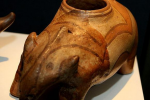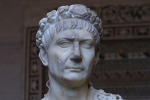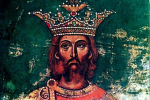After the revolution, the National Salvation Front (NSF), led by Ion Iliescu, took partial multi-party democratic and free market measures. Several major political parties of the pre-war era were resurrected. After major political rallies, in April 1990, a sit-in protest contesting the results of the recently held parliamentary elections began in University Square, Bucharest, accusing the NSF of being made up of former Communists and members of the Securitate. The protesters called the election undemocratic and asked for the exclusion from political life of former high-ranking Communist Party members, such as Iliescu himself. The protest rapidly grew to become what president Iliescu called the Golaniad. The peaceful demonstrations degenerated into violence, prompting the intervention of coal miners, summoned by Iliescu in June 1990, from the Jiu Valley. This episode has been documented widely by both local and foreign media, and is remembered as the June 1990 Mineriad.
The subsequent disintegration of the Front produced several political parties including the Social Democratic Party, the Democratic Party and the Alliance for Romania. The former governed Romania from 1990 until 1996 through several coalitions and governments with Ion Iliescu as head of state. Since then there have been several democratic changes of government: in 1996 the democratic-liberal opposition and its leader Emil Constantinescu acceded to power; in 2000 the Social Democrats returned to power, with Iliescu once again president; and in 2004 Traian B?sescu was elected president, with an electoral coalition called Justice and Truth Alliance. B?sescu was narrowly re-elected in 2009.
Post–Cold War Romania developed closer ties with Western Europe, eventually joining NATO in 2004, and hosting the 2008 summit in Bucharest. The country applied in June 1993 for membership in the European Union and became an Associated State of the EU in 1995, an Acceding Country in 2004, and a member on 1 January 2007. Following the free travel agreement and politics of the post–Cold War period, as well as hardship of the life in the 1990s economic depression, Romania has an increasingly large diaspora, estimated at over 2 million people. The main emigration targets are Spain, Italy, Germany, Austria, the United Kingdom, Canada and the United States.
During the 2000s, Romania enjoyed one of the highest economic growth rates in Europe and has been referred to as “the Tiger of Eastern Europe.” This has been accompanied by a significant improvement in human development.[105] The country has been successful in reducing internal poverty and establishing a functional democracy. However, Romania’s development suffered a major setback during the late-2000s recession as a large gross domestic product contraction and a large budget deficit in 2009 led to Romania borrowing heavily, eventually becoming the largest debtor to the International Monetary Fund in 2010. Romania still faces issues related to infrastructure, medical services, education, and corruption.
Related Listing
-

Prehistory
Some 42,000-year-old human remains were discovered in the "Cave With Bones", and being Europe’s ...
-

Antiquity
The earliest written evidence of people living in the territory of the present-day ...
-

Middle Ages
Gesta Hungarorum, also known as the Chronicle of Anonymus, mentioned the existence of ...











Recent Reviews